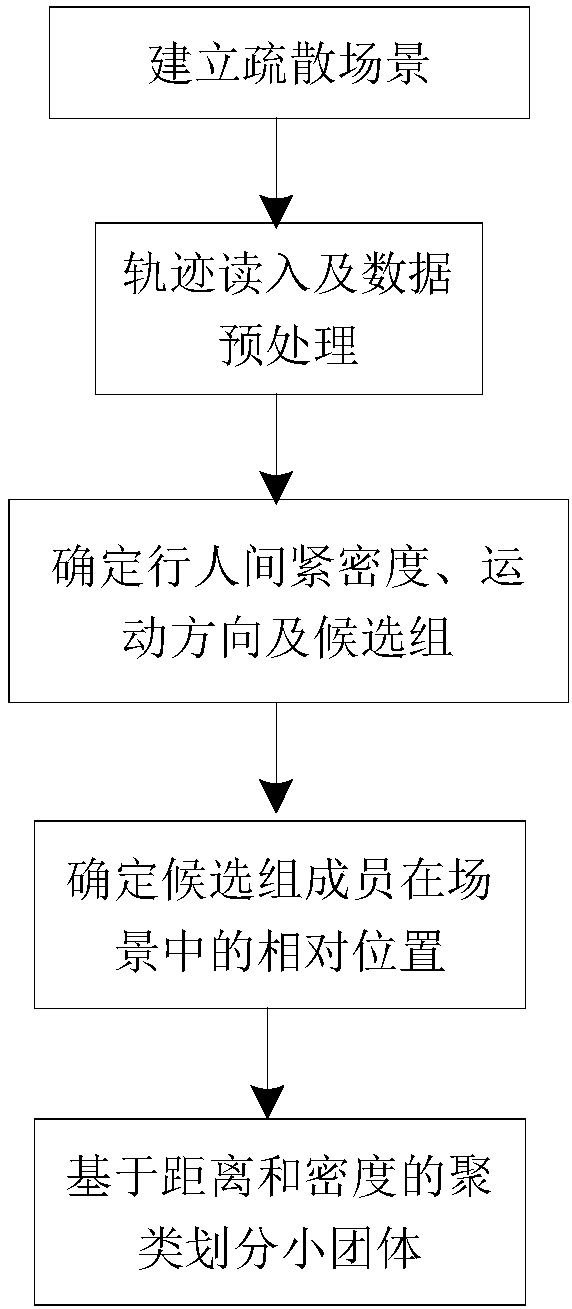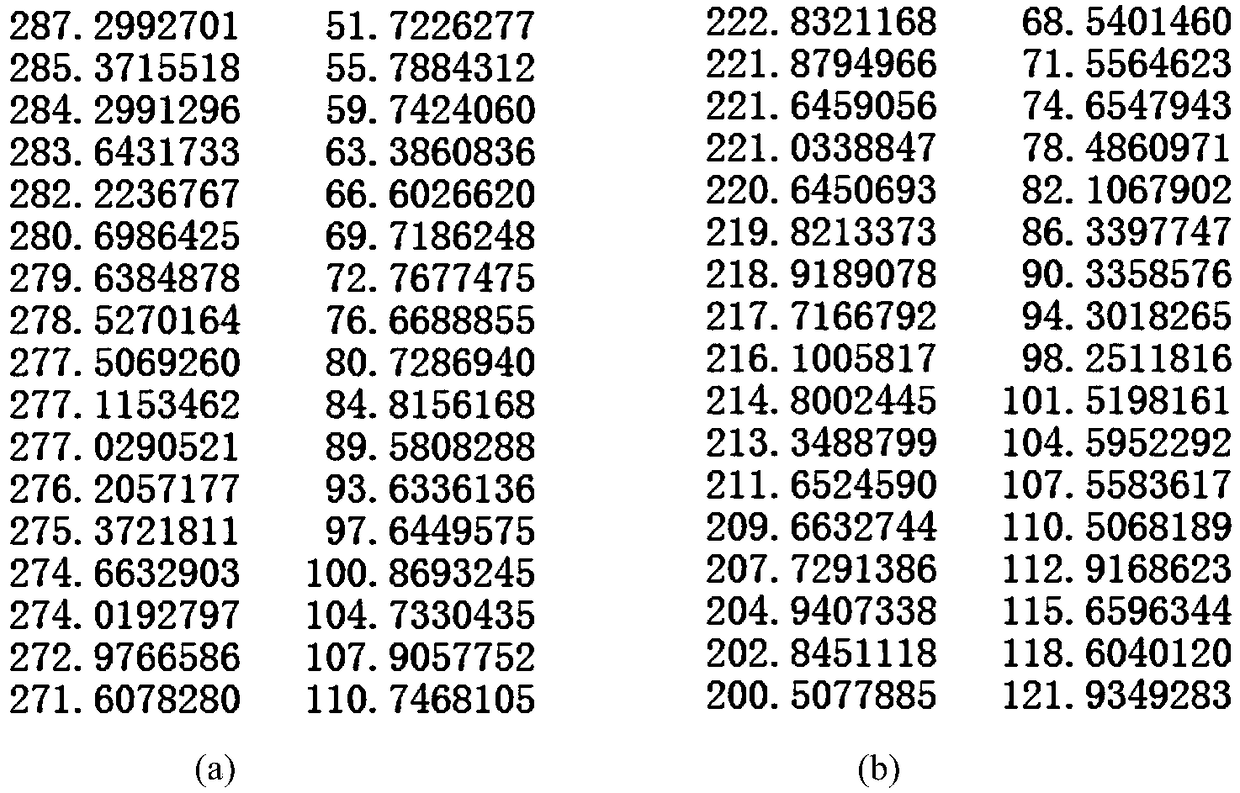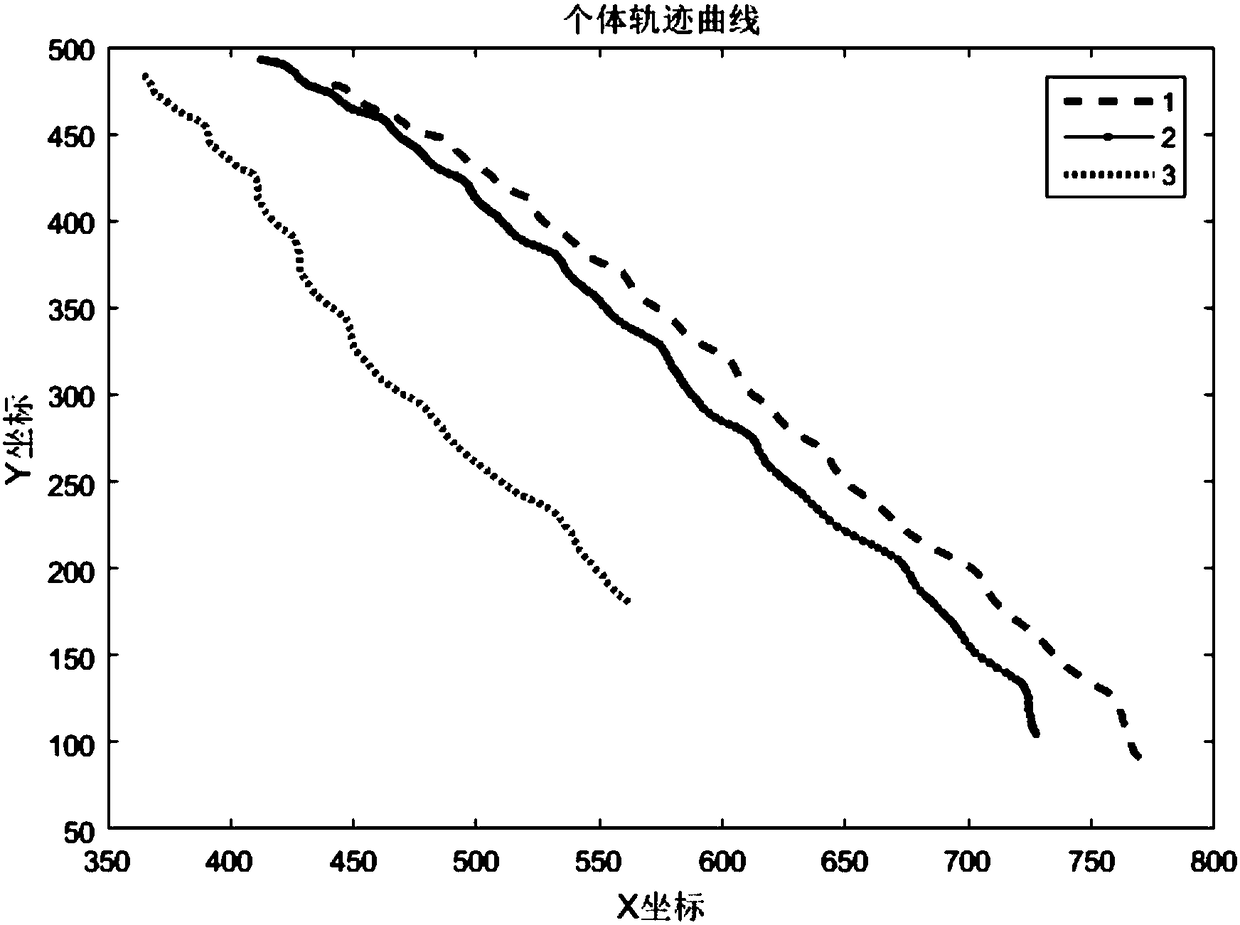Trajectory data-based pedestrian relationship judging method and system
A technology of trajectory data and pedestrians, applied in the field of behavior understanding of moving objects, can solve problems such as not considering the impact of pedestrians' social relations, achieve the effect of optimizing the actual evacuation process and improving evacuation efficiency
- Summary
- Abstract
- Description
- Claims
- Application Information
AI Technical Summary
Problems solved by technology
Method used
Image
Examples
Embodiment 1
[0065] This embodiment discloses a method for judging pedestrian relationships based on trajectory data, such as figure 1 As shown, including the following steps:
[0066] Step 1: Establish an evacuation simulation scene;
[0067] Specifically, a rectangular plane area with a length of 30m and a width of 20m is constructed as an evacuation simulation scene, and the area includes 3 exits (for a more realistic effect, a three-dimensional model is established).
[0068] Step 2: Read the pedestrian trajectory data and preprocess it;
[0069] Step 2.1: Analyze and read in the trajectory data file (as attached figure 2 As shown, partial trajectory data of two pedestrians are shown), the file number is 1~N;
[0070] Step 2.2: Define the trajectory data set as DP={dp i ,i=1,2,...,N}, dp i =(dp i1 ,dp i2 ,...,Dp in ) Represents the data of the i-th individual in the data set, dp ij Represents the j-th data of the i-th individual, including serial number, coordinates, flags, etc.
[0071] Crowd...
Embodiment 2
[0116] The purpose of this embodiment is to provide a computing system.
[0117] A system for judging pedestrian relationships based on trajectory data includes a memory, a processor, and a computer program stored in the memory and running on the processor. The processor implements the following steps when the program is executed, including:
[0118] Step 1: Establish an evacuation simulation scene;
[0119] Step 2: Read the pedestrian trajectory data and preprocess it;
[0120] Step 3: Based on the trajectory data, a candidate group is determined according to the distance and direction characteristics between pedestrians;
[0121] Step 4: Determine the relative position of the pedestrian in the candidate group in the scene;
[0122] Step 5: Perform clustering analysis based on the relative position of the individual pedestrians in the scene, and divide groups according to the distance of close relationship.
Embodiment 3
[0124] The purpose of this embodiment is to provide a computer-readable storage medium.
[0125] A computer-readable storage medium on which a computer program is stored, and when the program is executed by a processor, the following steps are performed:
[0126] Step 1: Establish an evacuation simulation scene;
[0127] Step 2: Read the pedestrian trajectory data and preprocess it;
[0128] Step 3: Based on the trajectory data, a candidate group is determined according to the distance and direction characteristics between pedestrians;
[0129] Step 4: Determine the relative position of the pedestrian in the candidate group in the scene;
[0130] Step 5: Perform clustering analysis based on the relative position of the individual pedestrians in the scene, and divide groups according to the distance of close relationship.
[0131] The steps involved in the devices of the above second and third embodiments correspond to the first method of the method. For the specific implementation, please...
PUM
 Login to View More
Login to View More Abstract
Description
Claims
Application Information
 Login to View More
Login to View More - R&D
- Intellectual Property
- Life Sciences
- Materials
- Tech Scout
- Unparalleled Data Quality
- Higher Quality Content
- 60% Fewer Hallucinations
Browse by: Latest US Patents, China's latest patents, Technical Efficacy Thesaurus, Application Domain, Technology Topic, Popular Technical Reports.
© 2025 PatSnap. All rights reserved.Legal|Privacy policy|Modern Slavery Act Transparency Statement|Sitemap|About US| Contact US: help@patsnap.com



